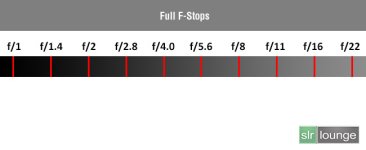I'm about to pull the trigger on the 11-16 f/2.8. It was my favorite lens before I had to sell it a few months back.
I was just looking at the Sigma 10-20mm f/4-5.6 lens as well. I don't know if that extra 1mm on the wide side would make much of a difference. It would be nice to go to 20mm once in a while ,but when I had the 11-16 I don't remember wishing for it that much.
Having said all that , How many stops would I lose on the wide side going from f/2.8 to f/4? I know how to figure stops for ISO and shutter speed, but f/stops confuse the hell out of me.
I was just looking at the Sigma 10-20mm f/4-5.6 lens as well. I don't know if that extra 1mm on the wide side would make much of a difference. It would be nice to go to 20mm once in a while ,but when I had the 11-16 I don't remember wishing for it that much.
Having said all that , How many stops would I lose on the wide side going from f/2.8 to f/4? I know how to figure stops for ISO and shutter speed, but f/stops confuse the hell out of me.

